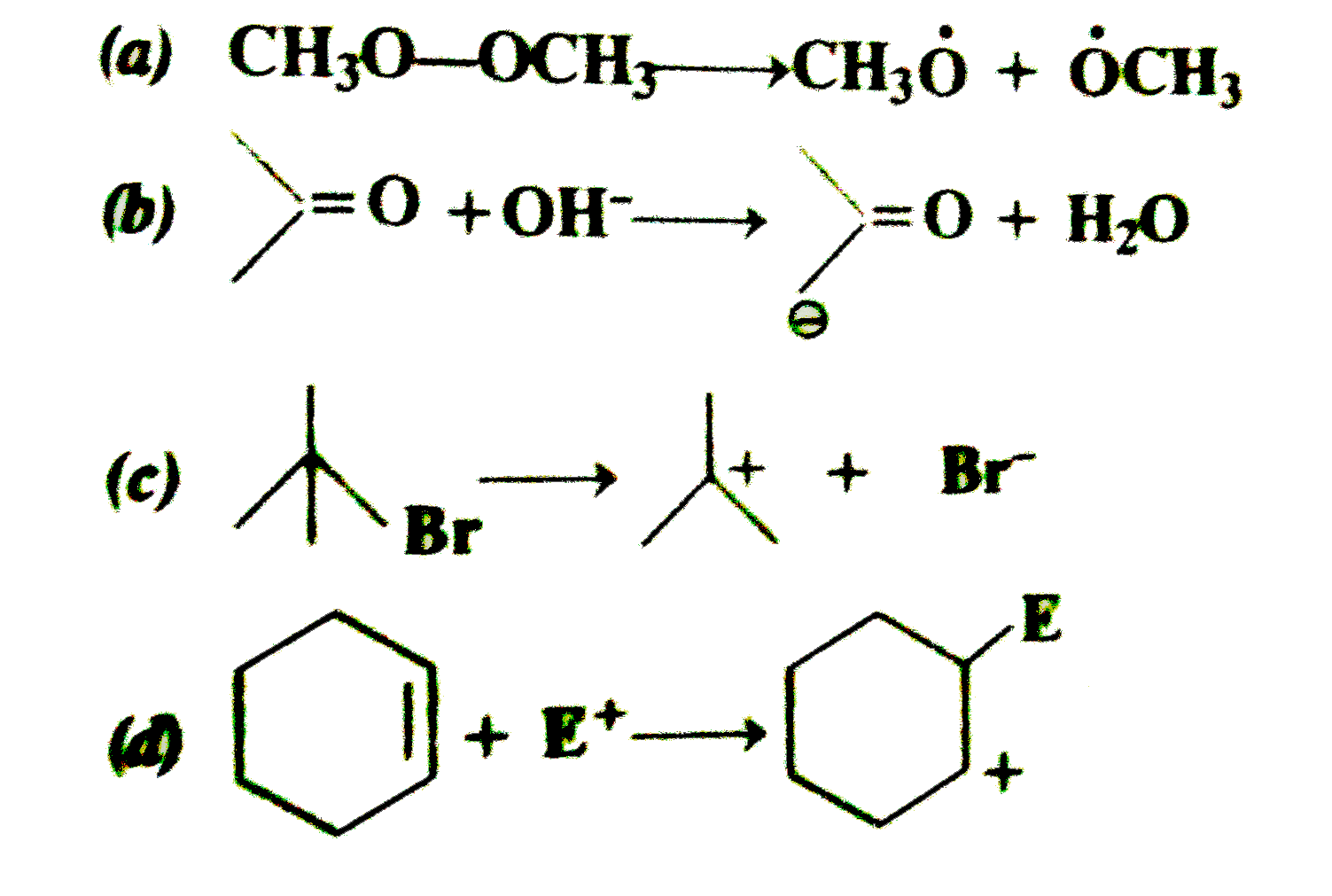What is free radicals, carbanions and carbocations? How they form?
These three are very unstable and reactive intermediate obtained during organic reaction. The carbocation and carbonions is formed by heterolytic cleavage and the electron pair of bond is transfer on only one atom. In formation of free radical, By hemolytic cleavage, one of the electrons of the shared pair in a covalent bond goes with each of the bonded atom
Topper's Solved these Questions
- ORGANIC CHEMISTRY SOME BASIC PRINCIPLES AND TECHNIQUESBOOK - KUMAR PRAKASHANCHAPTER - ORGANIC CHEMISTRY SOME BASIC PRINCIPLES AND TECHNIQUESEXERCISE - Section-B - Match the following
28 Videos
- ORGANIC CHEMISTRY SOME BASIC PRINCIPLES AND TECHNIQUESBOOK - KUMAR PRAKASHANCHAPTER - ORGANIC CHEMISTRY SOME BASIC PRINCIPLES AND TECHNIQUESEXERCISE - Section-B - State True or False For The Following Statements
42 Videos
- ORGANIC CHEMISTRY SOME BASIC PRINCIPLES AND TECHNIQUESBOOK - KUMAR PRAKASHANCHAPTER - ORGANIC CHEMISTRY SOME BASIC PRINCIPLES AND TECHNIQUESEXERCISE - Section A -Try Your Self-3
20 Videos
- HYDROGENBOOK - KUMAR PRAKASHANCHAPTER - HYDROGENEXERCISE - Section-D NCERT Exemplar (Long Answer)
8 Videos
- QUESTION ASKED IN JEE -2018BOOK - KUMAR PRAKASHANCHAPTER - QUESTION ASKED IN JEE -2018EXERCISE - MCQ
10 Videos
Similar Questions
Knowledge Check
An organic reaction occurs by using reagents called electrophiles and nucleophiles via the formation of some reactive intermediates called carbocations, carbanions, free radicals, carbenes, nitrenes, radical cations, and radical anions.
Which of the following contains electrophiles only ?ABr⊕,PH3,H2OBNO⊕2,:CBr2,SO3CNH3,H2O,A1Br3DA1C13,CH2=CH2,SO3Heterolytic fission of C—Cl bond produces
two free radicals
two carbonium ions
two carbanions
one cation and one anion.Atwo free radicalsBtwo carbonium ionsCtwo carbanionsDone cation and one anion.An organic reaction occurs by using reagents called electrophiles and nucleophiles via the formation of some reactive intermediates called carbocations, carbanions, free radicals, carbenes, nitrenes, radical cations, and radical anions.
The most stable free radical is :APhCH2.CH2BMe.CH2CMe2.CHDPh.CHMe
Classify each of the following as homolysis or heterolysis. Identify the reaction intermediates produced , as free radical, carbocation and carbanion.

View SolutionFor the following bond cleavages, use curved-arrows to show the electron flow and classify each as homolysis or heterolysis. Identify reactive intermediate produced as free radical, carbocation and carbanion.

View SolutionAn organic reaction occurs by using reagents called electrophiles and nucleophiles via the formation of some reactive intermediates called carbocations, carbanions, free radicals, carbenes, nitrenes, radical cations, and radical anions.
Which of the following contains electrophiles only ?
View SolutionAn organic reaction occurs by using reagents called electrophiles and nucleophiles via the formation of some reactive intermediates called carbocations, carbanions, free radicals, carbenes, nitrenes, radical cations, and radical anions.
The most stable free radical is :
View SolutionFree radicals are formed through
View Solution
